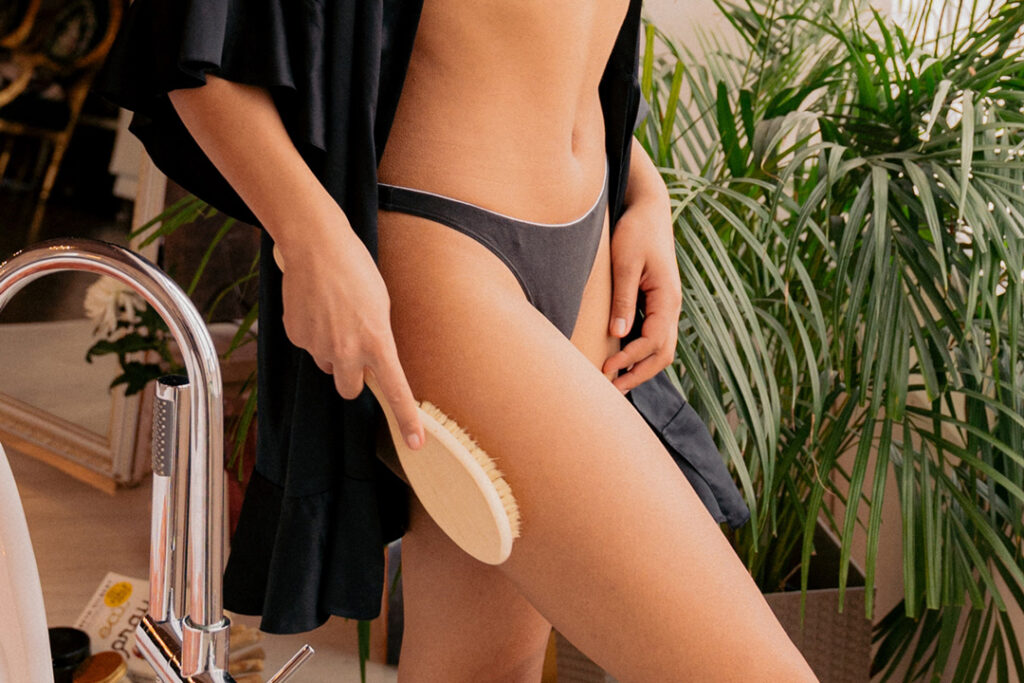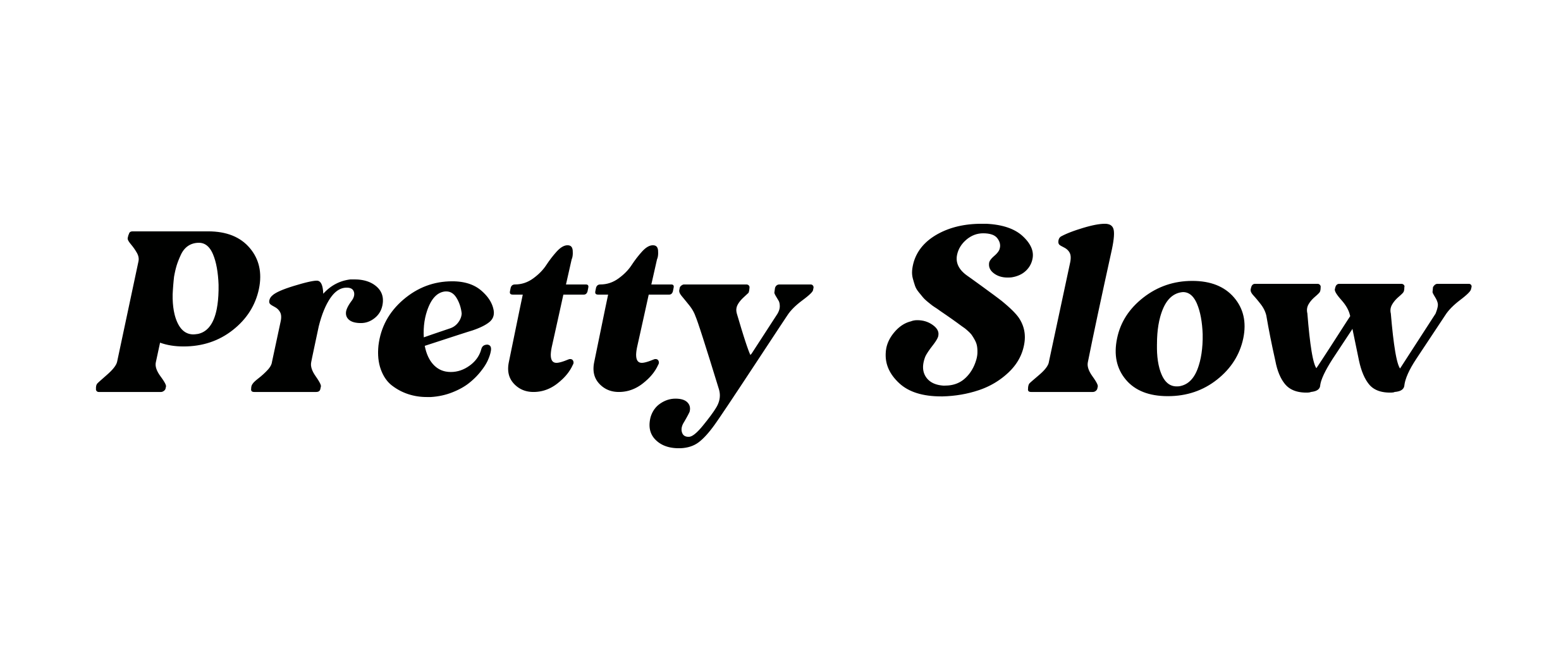Dry brushing, just like Gua Sha, has officially surpassed the fade-beauty stage and gained a top spot in our beauty routines.
From Miranda Kerr to Gwyneth Paltrow, all beauty-obsessed celebrity rave about this ancient method. But is this simple technique as good as anyone says? We looked into it.
Table of Contents
What is dry brushing?
Dry brushing is a wellness technique that involves using a dry brush with stiff bristles to brush the skin in a specific pattern. It is typically performed before bathing or showering. The process involves gently brushing the skin in long, sweeping motions, usually starting from the extremities and moving towards the heart.
The benefits of dry brushing are often attributed to its exfoliating and stimulating effects on the skin. While dry brushing is often suggested as a potential method for reducing the appearance of cellulite, its effectiveness in this regard is not supported by scientific research. Dry brushing may temporarily improve the skin’s appearance by promoting exfoliation, increasing circulation, and providing a temporary tightening effect. However, these effects are generally temporary and do not address the underlying causes of cellulite – which include genetics, hormonal changes, lifestyle, and body composition.
What are the benefits of dry brushing?
- Exfoliation: It helps to remove dead skin cells from the surface of the skin. By gently brushing the skin, the dry brush’s bristles help slough off the outermost layer of dead skin cells, revealing smoother and softer skin underneath. This exfoliating action can improve the texture and appearance of the skin.
- Increased circulation: The brushing motion of dry brushing stimulates blood flow to the skin’s surface. This enhanced circulation can bring more oxygen and nutrients to the skin cells, promoting a healthier complexion and a natural glow.
- Lymphatic system stimulation: The lymphatic system plays a vital role in eliminating waste, toxins, and excess fluid from the body. This technique is believed to help stimulate the lymphatic system, encouraging lymphatic drainage. This can help detoxify the skin and reduce puffiness or swelling in certain areas.
- Unclogging pores: This method can assist in unclogging pores by removing dead skin cells and accumulated dirt, oil, and debris from the skin’s surface. By keeping the pores clear, dry brushing may help prevent breakouts and promote clearer skin.
- Smoothing rough skin: It can be particularly beneficial for areas with rough or dry skin, such as the knees, elbows, or heels. Regular dry brushing can help to soften and smoothen rough patches.
- Relaxation and well-being: Beyond the physical benefits, many people find this technique to be a soothing and invigorating practice. The gentle pressure and rhythmic motion of brushing can provide a massage-like sensation, promoting relaxation and a sense of well-being.
While dry brushing offers potential benefits for the skin, it’s important to note that individual results may vary. It’s advisable to start with a gentle brush and technique, and if you have any underlying skin conditions or concerns, it’s best to consult with a dermatologist or skincare professional before incorporating dry brushing into your routine.

7 easy rules to follow when dry brushing:
- Choose the right brush: Select a brush specifically designed for dry brushing. Look for a brush with natural bristles that are firm but not too harsh on the skin. You can find dry brushes at health stores, beauty supply shops, or online.
- Include it in your daily routine: Dry brushing is typically done before bathing or showering. Find a convenient time that works for you, whether it’s in the morning or evening.
- Make sure your skin is dry: Ensure that your skin is completely dry before you begin dry brushing. It’s recommended to brush over dry skin to maximize the exfoliating benefits.
- Perfect your technique: Start with lighter pressure initially and gradually increase as your skin gets accustomed to the sensation.
- Find the balance: The pressure applied during dry brushing should be firm enough to stimulate the skin but not so hard that it causes discomfort or irritation. Pay attention to how your skin feels and adjust the pressure accordingly. It’s normal for the skin to turn slightly pink after brushing due to increased circulation, but if it becomes red or irritated, you may be applying too much pressure.
- Shower or bathe: After dry brushing, take a shower or bath to rinse off the exfoliated skin cells.
- Moisturize: After bathing, apply a moisturizer or body oil to replenish the skin’s moisture and keep it hydrated.
Remember, everyone’s skin is different, so it’s essential to listen to your body and adjust the pressure and frequency of dry brushing to suit your comfort level. Start with two to three times per week and see how your skin responds. If any irritation or discomfort occurs, reduce the frequency or discontinue the practice.
A step-by-step guide to dry brushing:
- Begin at your feet: Start brushing the soles of your feet. Use long, sweeping motions towards your heart. Brush each area multiple times, overlapping the strokes slightly.
- Legs and arms: Move upwards, brushing each leg and arm in the same sweeping motion. Remember to brush towards the heart to follow the natural direction of lymphatic flow.
- Abdomen and back: Move to your abdomen, using clockwise circular motions. Be gentle on the sensitive abdominal area. For the back, you may need a long-handled brush or seek assistance.
- Chest and décolletage: Brush your chest area and décolletage using upward strokes towards your heart.
- Neck: Use a softer brush specifically designed for the delicate skin on your neck. Brush gently in upward motions.
Does dry brushing help circulation?
Yes, dry brushing is believed to help improve circulation. The brushing action of dry brushing stimulates the blood flow in the skin and underlying tissues. This increased circulation can have several benefits for the body:
Enhanced oxygen and nutrient delivery: Improved blood circulation brings a greater supply of oxygen to the skin cells. This can contribute to healthier skin and a more radiant complexion.
Removal of waste products: Efficient circulation helps to remove toxins from the skin tissues. By stimulating blood flow, dry brushing may support the body’s natural detoxification processes.
Lymphatic system stimulation: The lymphatic system plays a crucial role in removing toxins from the body. Dry brushing is believed to help stimulate the lymphatic system, which aids in the circulation of lymph fluid. This can help remove excess fluid and reduce puffiness or swelling in certain areas.
It’s important to note that while many individuals claim that dry brushing improves circulation and promotes overall well-being, scientific research on the specific circulatory benefits of dry brushing is limited. The anecdotal evidence and personal experiences of individuals who practice dry brushing are the primary sources of information regarding its potential effects on circulation.
Dry brushing vs exfoliation
Dry brushing and exfoliating are both skincare practices that involve the removal of dead skin cells, but they differ in their techniques and tools used:
Dry brushing: Dry brushing is a technique performed using a dry brush with stiff bristles. The brush is used on dry skin in a sweeping motion, typically before bathing or showering. The purpose of dry brushing is to exfoliate the skin by removing dead skin cells from the surface and stimulating circulation.
Exfoliating: Exfoliating refers to the process of removing dead skin cells from the skin’s surface, revealing fresh and smoother skin underneath. Exfoliation can be done using various methods:
- Physical exfoliation: This involves using abrasive particles or tools, such as scrubs, brushes, loofahs, or exfoliating gloves, to scrub away dead skin cells.
- Chemical exfoliation: This involves using chemicals, such as alpha hydroxy acids (AHAs) or beta hydroxy acids (BHAs), to dissolve or loosen the bonds between dead skin cells, facilitating their removal.
Both physical and chemical exfoliation can be done on wet or damp skin, typically during bathing or showering.
The key differences between dry brushing and exfoliating are:
- Technique: Dry brushing involves using a brush with firm bristles on dry skin, while exfoliating can be done using scrubs, tools, or chemical products on wet or damp skin.
- Purpose: Dry brushing focuses not only on exfoliation but also on stimulating circulation and potentially aiding lymphatic system function. Exfoliating, on the other hand, primarily aims to remove dead skin cells and improve skin texture.
- Tools: Dry brushing utilizes a dry brush with stiff bristles, while exfoliating can involve various tools, such as scrubs, brushes, gloves, loofahs, or chemical products.
It’s worth noting that both dry brushing and exfoliating can have benefits for the skin, but the specific method chosen depends on personal preference, skin type, and desired outcomes. It’s essential to be gentle when exfoliating and choose appropriate products or tools suitable for your skin’s sensitivity to avoid irritation or damage.


